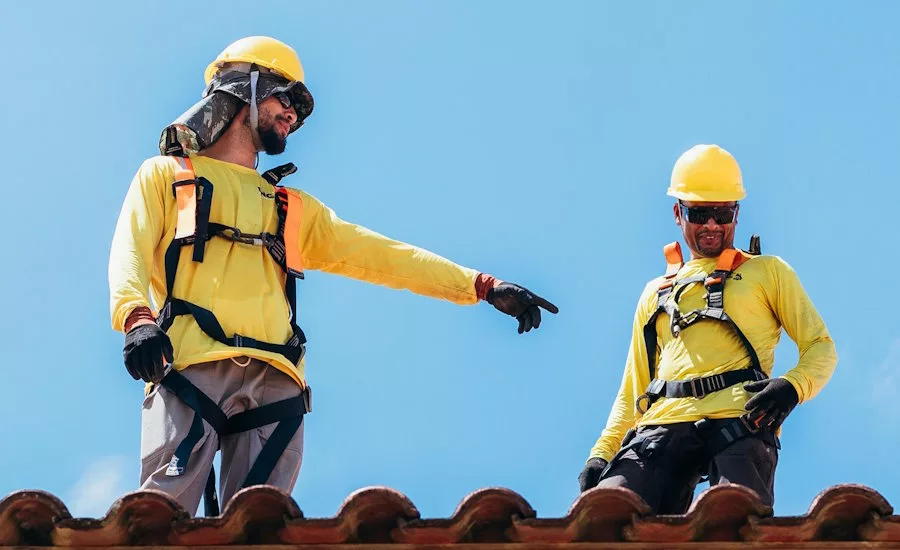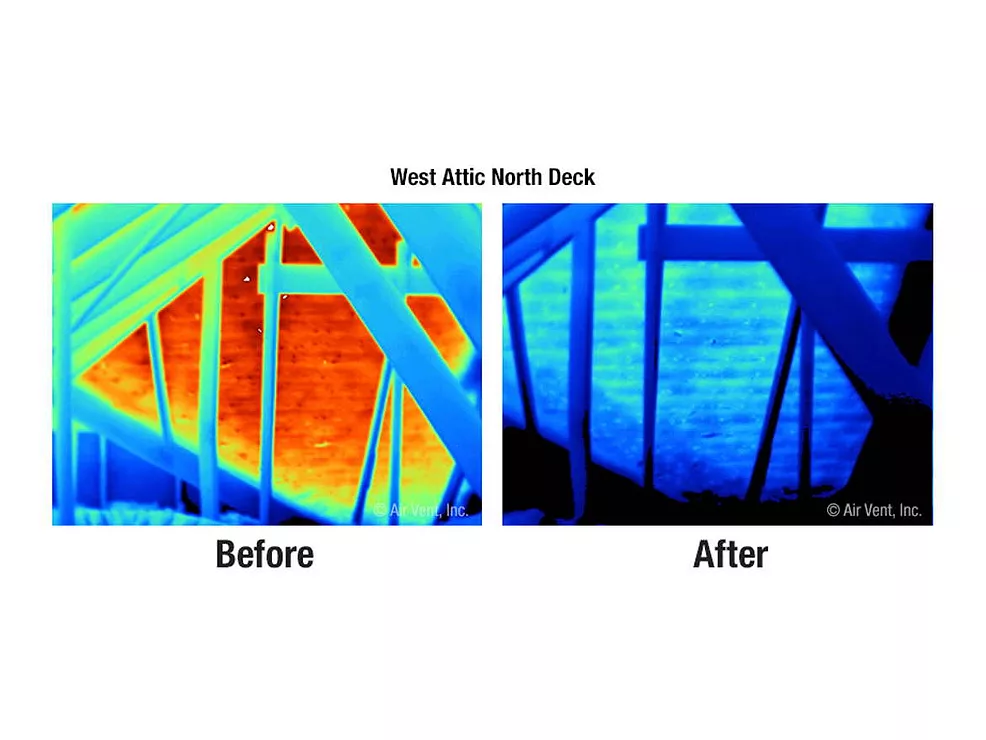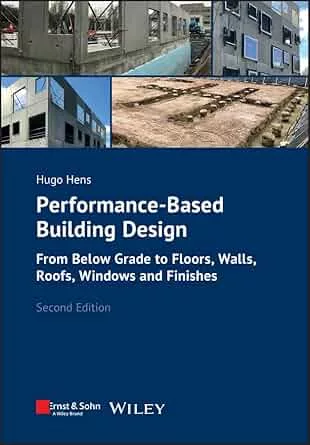Mold Below Decks
Fungal infections and related diseases may not disable a great number of roofers in this country, but many cases undoubtedly go unreported or are misdiagnosed. Many people are allergic to molds, mildew and fungus and exhibit a wide range of acute symptoms, such as asthma, skin rashes, fatigue, irritability and congestion. More severe symptoms may include coughing, nausea, headaches, arthritic aches and joint pain.
While some species may produce organ-specific physical reactions (eyes, ears, nose, throat and lungs), it is the fungal mycotoxins and volatile organic compounds that are produced as metabolites that pose the greatest threat to the exposed individual. The fungus, spore or metabolite that is inhaled may prove invasive and infectious.
The initial exposure symptoms are often flu-like, and not until the diseases become advanced is a diagnosis of a mold-induced disease even made. However, mycotoxins often produce chronic symptoms such as impaired breathing; memory loss; hearing, speech and eyesight degradation; loss of balance; and even epileptic-like seizures and brain damage.
Once a worker is infected, early diagnosis is critical to preventing debilitation, immune system compromise and permanent respiratory disabilities. There are no clinical tests available to determine the exact source, place or time of initial exposure. A simple blood test, which shows that the victim has produced antibodies, is the only definitive proof that an exposure occurred. As the employer of an infected worker, you should seek a diagnosis from a medical practitioner trained in occupational or environmental medicine. Due to the tremendous variations in fungal species, sensitive and specific methods of testing and screening are very time consuming for the patient.
Mold Testing and Analysis
Most large municipality and state departments of health have researched and developed public health protocols to address these indoor environmental contaminants, including testing and assessment techniques, remediation procedures and hazard communication policies.As a roofing contractor, you are not expected to obtain a graduate degree in mircobiology or mycology. However, your written contract should contain a “nondisclosure” clause that is adequately phrased to reduce your liability and release your obligations to perform your contract when undisclosed conditions involving hazardous materials (including biohazards) are discovered or suspected.
You may even require the property owner or prime contractor to perform definitive environmental testing and analysis before and after you work where any hazmat is suspected. At that point, you may even choose to abate the mold hazard yourself in the performance of your roofing or demolition project.
If another contractor or owner is undertaking the removal of black-mold-infested materials from your roofing project, you should have copies of the lab tests taken prior and post abatement, before you start working. In most cases, if the gross contamination of mold is observed (musty anaerobic smell, black stain on building materials, etc.) and a worker is showing any of the initial exposure symptoms, you may proceed as if there is a hazardous mold exposure. However, due to the cost and delay factors of abatement, the owner or prime contractor may argue that these symptoms and observations do not conclusively prove the presence of harmful molds. Therefore, testing may be required.
Testing may be performed by bulk sampling or air-test procedures and follow these minimal, noninclusive parameters:
Testing may be practiced when mold is suspected (smell) but not observed.
Testing (air or grab sampling) should not be practiced in a manner that agitates the mold or unnecessarily exposes unprotected workers. Ventilation should be shut off and windows closed for still-air conditions.
Tests may be done with individual test kits (which are mailed back to a lab for testing or analysis), or performed by a certified industrial hygienist for a reputable environmental testing agency. In any case, protect your workers and your firm by thorough documentation, photographs and daily work logs sufficiently detailed to enable you to adequately reconstruct the work shift three years later.
Air monitoring may not be necessary, except in the diagnosis of either aspergillosis or stachybotryotoxicosis in a worker.
Air tests should be concurrently taken at any natural air inlet into the affected space to eliminate the possibility of cross contamination.
Personnel performing the tests should be medically examined to ensure that they are capable of entering the area; thoroughly trained and evaluated in biohazard awareness and decontamination procedures; and fit-tested for and supplied with the appropriate personal protective equipment for the hazard level assumed.
Analysis of test results must be made by either a professional accredited by the American Industrial Hygiene Association or a lab certified by the Environmental Microbiology Laboratory Accreditation Program.
Remediation and Disposal
If you choose to undertake mold remediation as part of your roofing/demolition project, special emphasis should be placed on the comprehensive and hands-on training of abatement personnel before exposing them to health hazards. Often a simple exposure can produce medical conditions that affect their lives for years to come. They should also have access to the best professional equipment available, including fit-tested respirators, Level-B protective clothing, moisture meters, remote-cavity biohazard samplers, fiber-optic scopes, and cassettes for sampling airborne aerosols and decontamination supplies. A written, site-specific abatement plan should be developed and every member of the abatement team should be trained in its specific procedures and their own tasks.
The species of the mold and the size (volume) of the abatement areas are crucial to determining an adequate abatement plan. The reaction time is crucial with molds, due to their rapid and aggressive colonization patterns. The ease of exposure by several inhalations emphasizes the need for writing and practicing an efficient abatement plan. Water leaks and accumulation should always be stopped immediately as moisture is essential to growth and the production of spores. Relative humidity should be tested and maintained below 60 percent to inhibit mold growth. The goal of remediation is to remove or clean contaminated materials by methods that prevent the emission of fungi particles and spores. There are basically five recommended levels of mold and fungus remediation.
Level I: Small, isolated areas (10 square feet or less), such as ceiling tiles or section of gypsum board.
- Abatement workers may be maintenance personnel who have been appropriately trained in hazard awareness.
- Provide NIOSH N95 respirators, gloves and protective clothing in accordance with OSHA standards.
- Evacuate nonessential personnel (with medical evaluations).
- Dust-suppression procedures (misting) by 100-percent containment are not required.
- Contaminated materials that cannot be cleaned should be removed in double-sealed plastic bags. Check state requirements for disposal of moldy materials.
- Contaminated areas and work areas should be cleaned with antimicrobial detergent and left dry and visibly free from contamination and debris.
Level II: Mid-sized isolated areas (10 to 30 square feet), such as several pieces of drywall.
- Abatement workers may be maintenance personnel who have been appropriately trained in hazard awareness.
- Provide NIOSH N95 respirators, gloves and protective clothing in accordance with OSHA standards.
- Evacuate nonessential personnel (with medical evaluations).
- Use a plastic sheet with taped seams to cover the work area and contain dust.
- Dust suppression procedures (misting) are recommended.
- Contaminated material that cannot be cleaned should be removed in double-sealed plastic bags. Check state requirements for disposal of moldy material.
- Areas used by workers for egress should be HEPA vacuumed and the work area should be cleaned with antimicrobial detergents and left dry and visibly free from contamination and debris.
Level III: Large isolated areas (30 to 100 square feet) such a several wallboard panels.
- Consult an experienced microbial-certified safety and health professional prior to remediation in order to develop an abatement plan.
- Abatement workers may be maintenance personnel that have been appropriately trained in hazard awareness.
- Provide NIOSH N95 respirators, gloves and protective clothing in accordance with OSHA standards.
- Evacuate nonessential personnel (with medical evaluations).
- Dust-suppression procedures (misting) are recommended.
- Contaminated materials that cannot be cleaned should be removed in double-sealed plastic bags. Check state requirements for disposal of moldy material.
- Work areas used for egress should be HEPA vacuumed and the work area cleaned with antimicrobial detergent and left dry and visibly free from contamination and debris.
- If abatement is expected to produce a lot of dust, such as by abrasive cleaning or demolition, or if the fungi is very visible in heavy blanket or pocket concentrations, then Level IV remediation procedures should be followed.
Level IV: Extensive contamination (more than 100 square feet of contiguous area).
- Consult an experienced microbial-certified safety and health professional prior to remediation in order to develop an abatement plan.
- Pre-entry and continuous air monitoring are recommended.
- Abatement workers should obtain advanced mold hazard and decontamination training for experienced professional abatement personnel.
- Provide NIOSH N100 respirator, disposable gloves and protective clothing that covers head, feet and hands in accordance with OSHA standards.
- Evacuate nonessential personnel (with medical evaluations).
- Use a plastic sheet with taped seems to completely isolate the work area and contain dust. Seal adjacent HVAC systems.
- Provide NIOSH-approved exhaust fan with HEPA filter to generate negative pressure to sealed work area.
- Design and provide adequate airlocks and decontamination room.
- Contaminated material that cannot be cleaned should be removed in double-sealed plastic bags. Clean the outside of the bags in the decontamination room with a HEPA vacuum prior to transporting them to uncontaminated areas of the building. Check state requirements for disposal of moldy materials.
- The egress area should be HEPA vacuumed. The work area should be cleaned with antimicrobial detergent and left dry and visibly free from contamination and debris.
There should be post-abatement air monitoring prior to reoccupation.
Level V: Contaminated HVAC systems.
- Due to the fact these systems are open at intakes and exhaust while closed and trapped at filters, plenums and ductwork, it is recommended that extreme measures should be practiced when components are evident on the roof and there is potential exposure.
- Consult an experienced microbial-certified safety and health professional prior to remediation in order to develop an abatement plan.
- Pre-entry and continuous air monitoring is recommended.
- Abatement workers should have advanced-mold-hazard and decontamination training for experienced, professional abatement personnel.
- Provide full-face NIOSH N100 powered-air-supplied respirators, Level-B disposable gloves and protective clothing that covers head, feet and hands in accordance with OSHA standards.
- Evacuate nonessential personnel (with medical evaluations) from any potential area serviced by the HVAC system.
- Remove growth-supporting materials potentially contaminated (paper, insulation, filters, etc.).
- Seal porous and semiporous permanent materials and structures with paint that has been treaded with antimicrobial additives.
- Use a plastic sheet with taped seams to completely contain dust in the contaminated work area. Seal the adjacent HVAC systems.
- Provide a NIOSH-approved exhaust fan with a HEPA filter to generate negative pressure to the sealed HVAC-system work area.
- Design and provide adequate airlocks and a decontamination room.
- Contaminated materials that cannot be cleaned should be removed in double-sealed plastic bags. Clean the outside of the bags in the decontamination chamber with a HEPA vacuum prior to transporting them to uncontaminated areas of the building. Check state requirements for disposal of moldy materials.
- The contained work area and decontamination room used by workers for egress should be HEPA vacuumed. The work area should be cleaned with antimicrobial detergent and left dry and visibly free from contamination and debris before removal of isolation barriers.
- There should be postabatement air monitoring prior to reoccupation.
- Treat ducts, cooling coils, condensation pans and miscellaneous HVAC components with biocides recommended by the manufacturer.
Conclusion
Whenever gross fungal growth is observed or even suspected by anyone on the job site, the property owner should be notified immediately. The owner should then proceed according to hazard communication methods to notify all affected employers on the work site. These employees, such as roofing contractors, should likewise notify and evaluate their workers. If remediation is required, then all affected employees should be included in pre-abatement meetings with a disclosure of all the plans and procedures. Knowledge and preparation is the best health defense for the employer. Post exposure, any employees with persistent health problems should be referred to a professional medical practitioner trained in mycological treatment.Looking for a reprint of this article?
From high-res PDFs to custom plaques, order your copy today!



